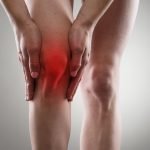JACOB SCHOR, ND
Members of our profession pride themselves in being early adopters. We like to be ahead of the curve when it comes to implementing new theories and ideas into clinical practice. It is perhaps easier for us to do so than our colleagues in other medical professions as our therapies are, by and large, safe. Furthermore, because the risk of harm is negligible, we can demand a lower burden of proof before trying out something new.
On the other hand, once we have taken on a new idea, it seems we often cling to it as if it was divine knowledge and are exceedingly hesitant to let go. This article may strike many of you as audacious, and you will wish to brand me as a heretic. But here goes.
For years, we have thought that the ratios of certain estrogen metabolites were predictive of cancer risk. It now seems that theory was never well proven. In fact, the evidence against this theory now far outweighs the evidence supporting it.
You are all familiar with this estrogen metabolite idea. It is summed up on a popular Internet website as follows:
[T]he estrogen compounds called 2-hydroxyestrone and 16-α-hydroxyestrone are by far the most important for breast health. 2-[H]ydroxyestrone is considered “The Good Estrogen” because its presence doesn’t seem to increase breast cancer risks, and MAY even be protective against it. However, 16-α-hydroxyestrone is considered “The Bad Estrogen” because its presence seems to INCREASE breast cancer risk and has even been called a cancer CAUSING agent! All women have both estrogens, but each woman has a different RATIO, and this ratio is more important to health than the total AMOUNTS of the estrogens [emphasis in original].1
I first read about this estrogen metabolite theory in 2002 in an article by Richard Lord, Bradley Bongiovanni, and Alexander Bralley,2 published in Alternative Medicine Review. It was already old news.
The first mention was actually 20 years earlier, in May 1982. Jill Schneider and her colleagues3 had measured estrogen metabolites in 33 women with breast cancer and compared the results with those in 10 healthy women. The patients with cancer had significantly higher rates of 16-hydroxylation. Because these pathways can yield potent estrogens, Schneider et al wondered whether this could increase the risk of breast cancer.
Breakdown of estradiol starts with the oxidation of a 17-β-hydroxy group to yield estrone. Estrone is then broken down through 1 of 2 pathways, yielding either 16α-hydroxyestrone or 2-hydroxyestrone. Each of these chemicals acts differently: the 16α-hydroxyestrone is stimulating, like estradiol, while the 2-hydroxyestrone has almost no estrogenic effect. Schneider and colleagues3 suggested that high levels of 16α-hydroxyestrone might increase breast cancer risk. Over the next few years, several additional articles added weight to their idea.
In 1984, Jack Fishman and colleagues4 reported that women with breast or endometrial cancer had increased 16α-hydroxylase activity. This increased activity preceded clinical evidence of disease and so was considered a possible prognostic or risk factor for estrogen-dependent tumors. Then in 1988, Swaneck and Fishman5 reported that 16α-hydroxyestrone sticks. It binds tightly to the estradiol receptors on breast cancer cells, causing long-lasting stimulation: “[T]he estrogen bound extensively and irreversibly….”5(p7831)
The evidence grew stronger in the years leading up to the article by Lord and colleagues2 in Alternative Medicine Review. In 1998, a large study by Meilahn et al6 was published in the British Journal of Cancer. The study measured estrogen metabolites in 5104 women 35 years and older. Using the ratio of 2-hydroxyestrone to 16α-hydroxyestrone as a biomarker, those in the highest tertile compared with those in the lowest tertile showed a 30% lower risk of breast cancer. The evidence supported the idea that 2 was good and 16 was bad except for one detail: these differences were not statistically significant (odds ratio [OR], 0.71; 95% CI, 0.29-1.75).
At the time, I suspect that we were not distracted by statistics, not when this theory had so many attractive attributes. The estrogen metabolite ratio enabled us to single out women at greater risk for cancer, and it gave us a way to treat these women and even monitor their risk reduction through laboratory testing along the way. We became fixated on supplements like indole-3-carbinol because it supposedly reduced 16α-hydroxyestrone. A woman who increased her ratio of 2-hydroxyestrone to 16α-hydroxyestrone by taking supplements lowered her risk of cancer, or so we thought.
This estrogen metabolite theory is now widely accepted in the world of alternative clinical practice, in particular naturopathic practice. From our books to our laboratories to our supplement companies, we all bought into it.
Somehow along the way, we must have stopped paying attention. Researchers have published one article after another investigating this theory, and the data have not been particularly supportive.
Over the years, at least 7 solid clinical studies have come along that have not been supportive of our theory. While some studies have found an association between some subgroups, these associations have not been consistent from one study to another.
I know that if I do not hammer through the details, our readers will question this statement. So here goes.
As mentioned, first is Meilahn et al6 in 1998, who seemed to support the idea that 2 is good and 16 is bad. However, their data lacked statistical significance.
Second is Muti and colleagues7 in November 2000. They analyzed data from 10 786 women enrolled in the Hormones and Diet in the Etiology of Breast Cancer cohort in Italy. For premenopausal women, a higher ratio of 2-hydroxyestrone to 16α-hydroxyestrone at baseline was associated with a nonsignificant 42% decreased risk of breast cancer: women in the highest quintile of the ratio had an adjusted OR for breast cancer of 0.58 (95% CI, 0.25-1.34). On the other hand, the risk increased in postmenopausal women by 29% (OR, 1.29; 95% CI, 0.53-3.10). Again, these numbers reached statistical significance, but you could say the trend supported the theory for premenopausal women but opposed it for postmenopausal women.
Third is Cauley and colleagues8 in 2003, who also failed to find a significant association. Estrogen metabolites of 272 women with breast cancer were compared with those of 291 control subjects. There was no significant difference in the ratio of 2-hydroxyestrone to 16α-hydroxyestrone between the groups. The risk of breast cancer among women in the highest quartile of this ratio compared with those in the lowest quartile was 1.17 (95% CI, 0.73-1.87). Although nonsignificant, this trend was opposite of what the theory predicts.
Wellejus et al9 from 2005 is fourth. From a cohort of 24 697 postmenopausal women, 426 breast cancer cases were identified, and it was found that higher 2-hydroxyestrone levels significantly increased the incidence of estrogen receptor–positive breast cancer among women currently using hormone therapy (HT). Higher levels of 16α-hydroxyestrone non-significantly lowered the risk of estrogen receptor–positive breast cancer. According to the theory, remember that 2 is supposed to be good and 16 bad, but the opposite effect occurred in this study.
Still counting, Modugno and colleagues10 in 2006 is fifth. However, a significant positive association was found between 16α-hydroxyestrone levels in women with breast cancer who were not taking HT, especially if they had high body mass indexes (BMIs). Data were collected from 200 women who developed breast cancer and compared with 200 healthy control subjects. The 16α-hydroxyestrone levels were modestly yet still significantly higher in HT users among patients with breast cancer. However, 2-hydroxyestrone levels were also substantially and significantly higher in HT users among patients with breast cancer. No associations between BMI, estrogen metabolism, and breast cancer risk were found for HT users. For non-HT users only, greater BMIs and higher 16α-hydroxyestrone levels were individually and jointly associated with increased breast cancer risk (OR, 3.51; 95% CI, 1.34-9.16 for women having high BMI and high 16α-hydroxyestrone compared with those having low BMI and low 16α-hydroxyestrone). Both BMI and HT change estrogen metabolism, and this may explain their relation to breast cancer risk.
In 2008, Heather Eliassen and colleagues11 at Harvard University’s Channing Laboratory (Boston, Massachusetts) reported on their attempt to sort out the effect of these estrogen metabolites. Count this as sixth. Using data from the Nurses’ Health Study and testing for 2-hydroxyestrone and 16α-hydroxyestrone, they compared levels in 340 breast cancer cases with those in 677 matched controls. Neither metabolite changed breast cancer risk, nor did the ratio between the 2 metabolites.
Of interest, Eliassen et al11 found a significant positive association for 2-hydroxyestrone and the 2:16 ratio in women with estrogen receptor–negative and progesterone receptor–negative tumors. High 2-hydroxyestrone or a high 2:16 ratio was associated with triple the risk for estrogen receptor–negative and progesterone receptor–negative breast cancer. These results are the reverse of what the theory predicts.
Arslan and colleagues12 in 2009 is seventh. Comparing 377 premenopausal patients having breast cancer with an equal number of matched controls, the study concluded: “[N]o significant associations were observed between breast cancer risk and serum levels of 2-hydroxyestrone, 16α-hydroxyestrone, or their ratio.”12(p)
We may love this estrogen metabolite theory for lots of reasons, but we should be aware of the following conclusion by Zeleniuch-Jacquotte et al: “On the whole, prospective epidemiological data do not support the hypothesis that the 2-hydroxyestrogen pathway is protective, and the 16a-hydroxyestrogen pathway harmful, in hormone-dependent cancers.”13(p1462)
The most important article may be a February 2011 meta-analysis by Obi and colleagues.14 Data from 9 earlier studies were combined, yielding 682 premenopausal cases of breast cancer and 1189 postmenopausal cases, eliciting the following conclusion: “For the highest compared with the lowest quartile of urinary EMR [estrogen metabolite ratio], nonsignificant associations suggested at best a weak protective effect in premenopausal but not in postmenopausal breast cancer (range of odds ratios: 0.50-0.75 for premenopausal and 0.71-1.31 for postmenopausal). Circulating serum/plasma EMR was not associated with breast cancer risk…. Results of the prospective studies do not support the hypothesis that EMR can be used as a predictive marker for breast cancer risk.”14(p37)
The published data do not find these numbers useful at predicting the risk of endometrial cancer either. In 2011, Zeleniuch-Jacquotte et al13 reported finding no significant association for the ratio of 2-hydroxyestrone to16α-hydroxyestrone in a case-control study of 179 endometrial cancer cases and 336 controls. Their results failed to support the hypothesis that greater metabolism of estrogen through the 2-hydroxy pathway, relative to the 16α-hydroxy pathway, protects against endometrial cancer.
An article by Mackey et al15 in August 2012 may be the most recent contribution. After analyzing data from 845 women with breast cancer matched to 1690 control subjects, a modest positive association with breast cancer risk was observed for higher baseline levels of 2-hydroxyestrone and larger 2:16 ratios. This again is backward from what the theory suggests. Increasing amounts of 16α-hydroxyestrone that resulted from HT were not associated with breast cancer. A modest increase in the risk for breast cancer was found in those women with a higher 2-hyrdroxyestrone level at baseline. Increased 16α-hydroxyestrone was not associated with greater risk. Read that over if you need to. Again, this is backward from what the theory predicts.
Flaxseed consumption increases 16α-hydroxyestrone levels and should increase the risk of breast cancer according to the theory. Dispensing postmenopausal women increasing amounts of ground flaxseed for 12 weeks did not change urinary 2-hydroxyestrone levels.16 However, the urinary 2:16 ratio was lower at the end of the study period compared with baseline: “Based on the current paradigm of the effects of estrogen metabolism on breast cancer risk, the regimen of dietary flaxseed intake used in this study did not appear to favorably alter breast cancer risk through shifts in estrogen metabolism pathways in postmenopausal women.”16(p175) In other words, according to the theory, flaxseed meal should not be good for breast cancer risk.
When we adopted this estrogen metabolite theory, it was new and exciting and appeared to tie things together. It made sense. Just because something makes sense does not make it true. At this point in time, the evidence strongly suggests that estrogen metabolites are not predictive of cancer. We should no longer be ascribing prognostic value to these metabolites; we should not be describing one metabolite as good and the other as bad. We should not be deluding our patients into expending effort to improve their estrogen ratios, and we certainly should not sell them supplements to do this. Based on the current science, doing so would be ethically questionable.
Times change. We need to change with it.
 Jacob Schor, ND, FABNO is a 1991 graduate of NCNM and has practiced in Denver for the past 17 years. He served as president of the CANP from 1992 to 1999. He has served on the board of directors of the OncANP since 2006 and currently acts as secretary to the board. He is a Fellow of the ABNO. He was utterly shocked and humbled at the 2008 convention of the AANP to be presented with the Vis Award, an honor bestowed in the memory of William Mitchell. He is incredibly lucky to practice with his wife, Rena Bloom, ND. Dr. Schor writes newsletters for his patients that are popular with doctors and students.
Jacob Schor, ND, FABNO is a 1991 graduate of NCNM and has practiced in Denver for the past 17 years. He served as president of the CANP from 1992 to 1999. He has served on the board of directors of the OncANP since 2006 and currently acts as secretary to the board. He is a Fellow of the ABNO. He was utterly shocked and humbled at the 2008 convention of the AANP to be presented with the Vis Award, an honor bestowed in the memory of William Mitchell. He is incredibly lucky to practice with his wife, Rena Bloom, ND. Dr. Schor writes newsletters for his patients that are popular with doctors and students.
References
1. Knox K. Ratio of good to bad estrogens influences your breast cancer risk. October 13, 2009.http://www.naturalnews.com/027227_cancer_breast_estrogen.html#ixzz2KgUe3xqAhttp://www.naturalnews.com/027227_cancer_breast_estrogen.html. Accessed February 12, 2013.
2. Lord RS, Bongiovanni B, Bralley JA. Estrogen metabolism and the diet-cancer connection: rationale for assessing the ratio of urinary hydroxylated estrogen metabolites. Altern Med Rev. 2002;7(2):112-129.
3. Schneider J, Kinne D, Fracchia A, et al. Abnormal oxidative metabolism of estradiol in women with breast cancer. Proc Natl Acad Sci U S A. 1982;79(9):3047-3051.
4. Fishman J, Schneider J, Hershcope RJ, Bradlow HL. Increased estrogen-16α-hydroxylase activity in women with breast and endometrial cancer. J Steroid Biochem. 1984;20(413):1077-1081.
5. Swaneck GE, Fishman J. Covalent binding of the endogenous estrogen 16α-hydroxyestrone to estradiol receptor in human breast cancer cells: characterization and intranuclear localization. Proc Natl Acad Sci U S A. 1988;85(21):7831-7835.
6. Meilahn EN, De Stavola B, Allen DS, et al. Do urinary oestrogen metabolites predict breast cancer? Guernsey III cohort follow-up. Br J Cancer. 1998;78(9):1250-1255.
7. Muti P, Bradlow HL, Micheli A, et al. Estrogen metabolism and risk of breast cancer. a prospective study of the 2:16α-hydroxyestrone ratio in premenopausal and postmenopausal women. Epidemiology. 2000;11(6):635-640.
8. Cauley JA, Zmuda JM, Danielson ME, et al. Estrogen metabolites and the risk of breast cancer in older women. Epidemiology. 2003;14(6):740-744.
9. Wellejus A, Olsen A, Tjonneland A, Thomsen BL, Overvad K, Loft S. Urinary hydroxyestrogens and breast cancer risk among postmenopausal women: a prospective study. Cancer Epidemiol Biomarkers Prev. 2005;14(9):2137-2142.
10. Modugno F, Kip KE, Cochrane B, et al. Obesity, hormone therapy, estrogen metabolism and risk of postmenopausal breast cancer. Int J Cancer. 2006;118(5):1292-1301.
11. Eliassen AH, Missmer SA, Tworoger SS, Hankinson SE. Circulating 2-hydroxy- and 16α-hydroxy estrone levels and risk of breast cancer among postmenopausal women. Cancer Epidemiol Biomarkers Prev. 2008;17(8):2029-2035.
12. ArsIan AA, Shore RE, Afanasyeva Y, Koenig KL, Toniolo P, Zeleniuch-Jacquotte A. Circulating estrogen metabolites and risk for breast cancer in premenopausal women. Cancer Epidemiol Biomarkers Prev. 2009;18(8):2273-2279.
13. Zeleniuch-Jacquotte A, Shore RE, Afanasyeva Y, et al. Postmenopausal circulating levels of 2- and 16α-hydroxyestrone and risk of endometrial cancer. Br J Cancer. 2011;105(9):1458-1464.
14. Obi N, Vrieling A, Heinz J, Chang-Claude J. Estrogen metabolite ratio: is the 2-hydroxyestrone to 16α-hydroxyestrone ratio predictive for breast cancer? Int J Womens Health. 2011;3:37-51.
15. Mackey RH, Fanelli TJ, Modugno F, et al. Hormone therapy, estrogen metabolism, and risk of breast cancer in the Women’s Health Initiative Hormone Therapy Trial. Cancer Epidemiol Biomarkers Prev. 2012;21(11):2022-2032.
16. Sturgeon SR, Volpe SL, Puleo E, et al. Effect of flaxseed consumption on urinary levels of estrogen metabolites in postmenopausal women. Nutr Cancer. 2010;62(2):175-180.




